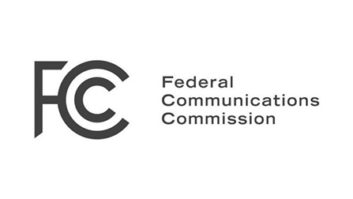In the Aug. 1 issue we began an examination of the items that remain unsettled in digital radio rulemaking, focusing first on the issue of subscription radio.
We’ll continue with consideration of the other open matters regarding IBOC.
One point that came as a surprise to some was the question of whether radio broadcasters’ disclosure obligations will be “enhanced.” While this is probably a worthwhile discussion, it is somewhat oddly placed in the IBOC rulemaking process.
In any case, it seems inevitable that this would come up in some radio broadcast proceeding, and such revisions might actually make compliance easier in the end.
This is particularly true if it involves broadcasters placing such data on their Web sites rather than having to maintain a hard-copy file.
Politics vs. technology
More contentious are the issues of broadcasters’ public interest responsibilities and diversity on new multicast channels.
Disagreement over this point among the commissioners was the main reason the Second Report & Order (FCC 07-33) was held up for so long. Ultimately the minority on the point — Democratic Commissioners Michael J. Copps and Jonathan S. Adelstein — agreed to voice their grievances in somewhat unusual “partial dissents” contained in their supplemental statements to the proceeding, and the ruling was issued in late May, some five years after the first R&O.
The concerns of the dissenting commissioners here are not simply semantic. From a political perspective, it is difficult to resolve the very limited access to broadcast spectrum offered to new entrants (such as with LPFM) with the new ability of incumbent broadcasters to multicast.
While the technically savvy can understand why simply slicing up a multiplexed bit stream into multiple compressed signals is different than squeezing new RF channel allocations into an already crowded spectrum band, these distinctions are lost on most policymakers.
And ultimately, from a pure policy perspective, it doesn’t matter anyway. To those who would advocate greater diversity of the airwaves, the situation clearly is a case of the rich getting richer, with no benefit flowing to the disenfranchised.
To these sectors, the unfairness is obvious when comparing how limited LPFM authorizations are, for example, with how easily incumbents gain multiple new channels via IBOC multicasting. In fact, even though IBOC technically occupies no new bandwidth, the dissenters repeatedly refer to the service as “digital spectrum” or “free use of additional spectrum made possible by digital technology.”
In his dissent, Commissioner Adelstein cited how few U.S. broadcast stations are in the hands of women and minorities (current station ownership or control stands at about 93 percent white male), a level of diversity that he declared “embarrassingly and unjustifiably low.” He characterized the new IBOC rules as “another missed opportunity to promote diversity, another dream deferred.”
Meanwhile, Commissioner Copps questioned the impact of IBOC multicasting in the context of broadcast ownership, saying in his dissent, “I hope we’ll look at this (multicasting) before anyone suggests loosening our ownership limits.” He also asked, “Does a company really need to own eight radio stations in a market when it has the ability to multicast?”
Other concerns
Localism was also on the commissioners’ minds, and here again the dissenters criticized the Second R&O for not adequately specifying requirements for maintaining or increasing local content in new IBOC services.
Adelstein criticized the commission’s own Localism Task Force in his statement, lamenting its inability to as yet complete a report on the status of localism in U.S broadcasting, a process it began in 2003. He felt the report would have been useful in writing the new IBOC rules, and encouraged the commission to complete the study soon.
Copps also questioned the proceeding’s leaving open the rules on subscription IBOC services to another round of rulemaking, wishing instead that the commission had settled on public interest obligations, indecency requirements and fees before issuing the Second R&O.
Regarding that Second Further Notice of Proposed Rulemaking included in the proceeding, Adelstein also took issue with its lack of directed questions on how to best implement public interest obligations on digital radio, and how to establish policy enforcing those obligations while serving both broadcasters’ needs and the public interest.
Even the statements by the majority of the commission expressed hope that broadcasters would utilize multicasting to promote localism and diversity of content. Left unsaid but perhaps implied was what might happen if broadcasters failed to adequately deliver on this expectation.
Commissioner Robert M. McDowell summed up the overarching message of the proceeding in this area with his statement’s recommendation to “study how multicasting evolves on its own and under existing public interest obligations before we try to anticipate or micromanage the market,” along with his belief that “the proper course now is to allow these nascent digital radio services to develop in the marketplace without heaping additional regulations upon them.”
He added, “My guess is my dissenting colleagues will be pleasantly surprised.”
Yet even McDowell’s lighter regulatory touch was countered with the admonition that “the commission will watch market developments carefully, mindful of our role to adopt new rules should they become necessary.”
He and other commissioners also noted that they will observe with great interest the comments received in response to the Second FNPRM. Thus it seems clear that the book is still quite open on digital radio rules in the United States. The possibility of a different political makeup on the commission by the time a Third R&O is written only adds to the uncertainty of what truly final IBOC rules will look like.
Next time we will conclude our look at the frontiers of IBOC regulation with an examination of the conditional access system proposed for use on subscription services by Ibiquity Digital.












